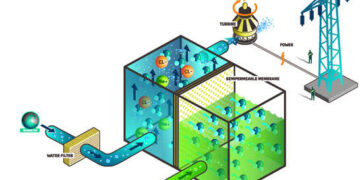Industries across the globe are in constant flux, driven by groundbreaking ideas that redefine conventional norms. These disruptive concepts not only challenge established players but also seize vast market opportunities with heightened efficiency, cost-effectiveness, and innovation. This comprehensive article delves into the mechanics of disruption, its historical and modern implications, and how organizations can thrive amid seismic change.
Understanding Disruption
Disruptive innovation refers to novel solutions that revolutionize existing markets by offering simpler, more affordable, or more accessible alternatives. Often originating from under-served or overlooked segments, these innovations gradually improve until they challenge and eventually overtake incumbent leaders. The term “disruptive innovation” was popularized by Clayton Christensen in his seminal work, The Innovator’s Dilemma.
Key Characteristics of Disruption
Affordability: Offers lower cost solutions without compromising functionality.
Accessibility: Makes products or services available to previously excluded demographics.
Simplicity: Delivers user-friendly experiences with streamlined features.
Scalable Potential: Starts small and expands rapidly as technology or adoption grows.
Historical Examples That Shattered Markets
Several pioneering cases illustrate how disruptive ideas dismantled dominant incumbents:
Digital Photography vs. Film
Companies like Kodak dominated analog photography for decades. Digital photography—initially poor in quality but rapidly improving—ushered in the decline of film.Ride-Sharing vs. Traditional Taxis
Uber and Lyft transformed personal transport by offering ride-booking via mobile app, transparent pricing, and reliable tracking—challenging longstanding taxi monopolies.Streaming Platforms vs. Cable TV
Netflix, Hulu, and Amazon Prime disrupted cable television by offering on-demand streaming at lower costs with greater flexibility.
Characteristics of Disruptive Ideas
Several shared traits enable disruptive innovations to break through barriers:
A. Targeting Overlooked Segments
Disruptors often focus on customers ignored by mainstream providers—like entry-level adopters or remote users.
B. Leveraging Emerging Technologies
Technologies like AI, blockchain, 3D printing, and IoT provide fertile ground for disruption.
C. Iterative Innovation
Rather than perfecting a product before launch, disruptors iterate with each version, adapting to feedback.
D. Flexible Business Models
Subscription services, freemium tiers, and usage-based pricing challenge traditional models.
E. Platform Creation
Many disruptors build ecosystems—developers, partners, users—that reinforce network effects.
Modern Disruptive Case Studies

1. Fintech Revolution
Mobile Banking & Pay Apps
Apps like Revolut, TransferWise, and GCash offer real-time payments, global transfers, and budgeting tools—accessible via smartphone.Open Banking APIs
Government and industry-backed APIs enable startups to integrate banking services for loans, investing, or budgeting.Cryptocurrency & DeFi
Blockchain-based platforms offer peer-to-peer lending, smart contracts, and decentralized exchanges—disintermediating traditional banks.
2. Remote Work & Collaboration Tools
Zoom & Microsoft Teams
These platforms made remote collaboration intuitive and scalable—shifting enterprise communication away from physical offices.Project Management Platforms
Tools like Asana, Trello, and the Atlassian suite streamline task organization and digital workflow management.
3. E-Learning Platforms
Massive Open Online Courses (MOOCs)
Platforms such as Coursera, edX, and Udemy offer flexible learning from universities and experts at low cost.Interactive Skill-Based Training
Sites like Codecademy, Pluralsight, and Skillshare offer project-based curricula in tech, design, and creative arts.
Strategies for Businesses to Embrace Disruption

Recognizing that disruption can threaten even large firms, the following approaches can help organizations adapt and compete:
A. Establish Innovation Labs
Dedicated incubators or skunkworks teams can experiment with emerging technologies and business models.
B. Foster a Culture of Experimentation
Encourage risk-taking, tolerate early failures, and reward creative problem‑solving.
C. Partner with Startups
Collaborations or investments in agile startups boost access to fresh ideas and markets.
D. Adopt Agile Development
Continuous improvement and rapid iteration allow enterprises to respond to market shifts swiftly.
E. Track Emerging Trends
Actively monitoring nascent technologies, regulations, and consumer behaviors offers early insight into disruptors.
Challenges Posed by Disruption
While disruption offers opportunity, it also brings headwinds:
Incumbent Resistance
Established firms may leverage political power, regulatory influence, or scale to resist change.Technology Lag
Outdated digital infrastructure can hamper adaptation efforts.Talent Gaps
It may be difficult to recruit individuals skilled in AI, data science, UX design, and digital marketing.Regulatory and Compliance Risk
Disruptive firms often face ambiguous legal frameworks around data, privacy, and cross-border operations.
Impact on Consumers and Economies
The ripple effects of disruption span multiple dimensions:
Price Transparency
When competitors enter the market, consumers benefit from clearer and more equitable pricing.Product Flexibility
Modular platforms and APIs empower consumers to tailor solutions to their needs.Job Market Evolution
While traditional roles may decline, technology-driven occupations flourish.Global Market Access
Disruptive models enable small players to reach worldwide audiences at low cost.
Anticipating Future Disruptive Waves
Emerging domains poised for transformation include:
A. Artificial Intelligence Everywhere
AI embedded in everything from customer support bots to real-time analytics.
B. Decentralized Finance (DeFi)
Smart contracts and blockchain networks enable peer-to-peer financial services unbound by traditional banks.
C. Healthcare Democratization
Telemedicine, wearable health monitors, and at-home diagnostics empower users with personalized care.
D. Green Energy Innovation
Distributed solar panels, smart grids, and battery solutions are changing power generation and distribution.
E. Extended Reality (XR)
AR and VR-based applications in education, remote work, and entertainment promise immersive, new experiences.
F. Autonomous and Electric Mobility
Self-driving cars, shared mobility services, and sustainable transport systems continue shifting urban design and infrastructure.
Guidelines for Entrepreneurs and Innovators
To harness disruption effectively, leaders should:
Identify Under-Served Niches
Look for demographics overlooked by mainstream firms; solve smaller problems first, then expand.Focus on Core Value Proposition
Disruptors succeed when they emphasize affordability, simplicity, and accessibility.Iterate Quickly
Use MVPs (Minimum Viable Products) to learn rapidly and adapt direction.Cultivate Strategic Partnerships
Collaborate with incumbents, regulators, and technology partners to scale responsibly.Plan for Scaling Up
Design for growth in infrastructure, compliance, and customer support.
Measuring and Sustaining Disruption
Key metrics include:
Customer Acquisition Cost (CAC) vs Lifetime Value (LTV)
Lower CAC and healthier LTV ratios reflect sustainable growth.User Engagement & Retention
High usage and retention signal strong product-market fit.Market Penetration Rates
Adoption trends within target demographics indicate scaling potential.Ecosystem Health
Partners, developers, and users adding value show resilience beyond core team.Unit Economics
Analyzing per-unit profitability ensures long-term viability.
Closing Thoughts
Disruptive innovations completely reshape how industries operate, often starting small and scaling until they redefine mainstream expectations. From mobile banking to telehealth and AI-powered tools, disruption paves the way for novel business models, fair pricing, greater accessibility, and enhanced user experiences.
For businesses, embracing disruption means nurturing experimentation, forming collaborations, and monitoring trends with agility. For consumers, disruption translates to a richer array of choices, convenience, and affordability. Though disruption brings complexity, it also fuels economic vitality, sparks progress, and empowers communities worldwide.







